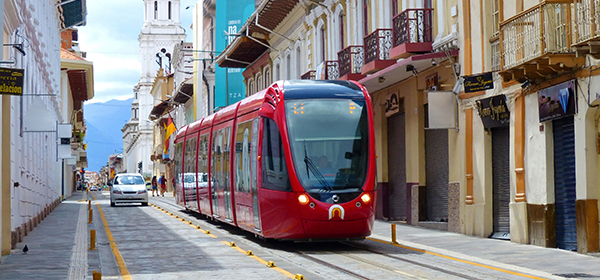Cost of Living in Manglaralto
Summary: If you're moving to Manglaralto, understanding the the cost of living in Manglaralto helps you know what to expect when it comes to apartment or house hunting, grocery shopping, transportation, dining out, utilities and more.

| Apartment Rentals | Apartment rentals in Manglaralto are relatively inexpensive. A one-bedroom apartment in the city center can cost around $200 per month, while a two-bedroom apartment can cost around $250 per month. Outside of the city center, prices can be even lower. |
| Apartment Purchases | The cost of purchasing an apartment in Manglaralto, Ecuador can vary greatly depending on the size and location of the property. A one-bedroom apartment in the city center can cost around $50,000, while a two-bedroom apartment can cost around $70,000. Outside of the city center, prices can be even lower. |
| Transportation | Public transportation in Manglaralto, Ecuador is relatively inexpensive. A one-way bus ticket costs around $0.50, while a taxi ride can cost around $2.00. |
| Groceries | The cost of groceries in Manglaralto, Ecuador is relatively low. A pound of rice costs around $0.50, while a gallon of milk costs around $2.00. |
| Restaurants | The cost of eating out in Manglaralto, Ecuador is relatively inexpensive. A meal at a local restaurant can cost around $5.00, while a meal at a more upscale restaurant can cost around $15.00. |
| Utilities | The cost of utilities in Manglaralto, Ecuador is relatively low. The average monthly cost for electricity, water, and gas is around $50.00. |
| Private School Tuition | The cost of private school tuition in Manglaralto, Ecuador can vary greatly depending on the school. Preschool tuition can cost around $100 per month, while elementary school tuition can cost around $200 per month. Middle school tuition can cost around $300 per month, while high school tuition can cost around $400 per month. |
Monthly Budget for Retirees in Manglaralto
"I have meet folks who live on $1200/mo including rent. Our lifestyle is more like $1200-1500 and we own our place. That includes eating out, 2 grocery runs/month, beer deliveries and biweekly massages for two," said one expat living in Manglaralto.
"The cost of living in Manglaralto is generally considered to be lower than in some other parts of the country but still high enough to provide an enjoyable lifestyle. Groceries, transportation, and other services are generally more affordable than in larger cities, and the local economy is aided by the nearby oil industry. While housing prices vary, the average for a two-bedroom apartment is between $300 to $500 per month. Eating out is typically inexpensive and the area is known for its seafood and traditional dishes. The area also offers many additional amenities such as plenty of outdoor recreation, entertainment, shopping, and educational opportunities," wrote a member in Manglaralto, Ecuador.
Can I live in Manglaralto on $1,500 a month?
"I've been living in Manglaralto for a while now, and I can tell you that it's definitely possible to live comfortably on $1,500 a month, but you'll have to make some sacrifices. First, you'll need to find a place to live that's affordable. I recommend looking for a rental in neighborhoods like Barrio Nuevo or Barrio Central, where you can find a decent apartment or small house for around $300 to $500 a month. You might want to avoid more expensive neighborhoods like Punta Barandua or Las Núñez, as the prices there can be significantly higher.Next, you'll need to adjust your expectations when it comes to modern amenities. While you can find places with reliable electricity and running water, you might have to sacrifice things like high-speed internet or air conditioning. I've found that using a fan and keeping windows open helps with the heat, and I've learned to be patient with the slower internet speeds.When it comes to transportation, owning a car can be expensive due to import taxes and high gas prices. I've found that using public transportation, like buses and taxis, is a more affordable option. Plus, it's a great way to get to know the local culture and people.Eating out can also be a significant expense, so I recommend cooking at home as much as possible. Local markets offer fresh produce, meats, and other staples at reasonable prices. When you do want to treat yourself to a meal out, there are plenty of local eateries that offer delicious, affordable meals.Finally, you'll need to be mindful of your entertainment and leisure expenses. While there are plenty of free or low-cost activities to enjoy, like hiking, beach days, or exploring local parks, you might have to cut back on more expensive hobbies or outings.Overall, living in Manglaralto on $1,500 a month is doable, but it requires some adjustments and sacrifices. By being mindful of your spending and embracing the local culture and lifestyle, you can make it work and enjoy a comfortable life in this beautiful coastal town," commented an expat living in Manglaralto.
Can I live in Manglaralto on $3,500 a month?
"I've been living in Manglaralto for a while now, and I can tell you that it's definitely possible to live comfortably on $3,000 a month, even if you're used to modern amenities. However, there are some sacrifices you'll have to make to ensure you stay within your budget.Firstly, you'll need to be mindful of where you choose to live. Some neighborhoods can be quite expensive, especially those that are closer to the beach or in more touristy areas. I'd recommend looking for a place in a more residential area, like Barrio Nuevo or Barrio Central, where you can find more affordable housing options. You might have to compromise on the size or quality of your living space, but it's worth it to save money.Another thing to consider is transportation. Owning a car can be quite expensive here, so I'd recommend relying on public transportation or even walking or biking to get around. The bus system is pretty reliable and affordable, and it's a great way to save money on transportation costs.Eating out can also add up quickly, so I'd suggest cooking at home as much as possible. The local markets are a great place to find fresh produce and other ingredients at a reasonable price. If you do want to eat out occasionally, try to stick to more local, family-owned restaurants rather than the more expensive tourist spots.As for entertainment, there are plenty of free or low-cost activities to enjoy in the area. The beach is always a great option, and there are also plenty of parks and outdoor spaces to explore. You might have to cut back on more expensive hobbies or activities, but there's still plenty to do on a budget.Overall, living in Manglaralto on $3,000 a month is definitely doable, but it does require some adjustments and sacrifices. By being mindful of your spending and prioritizing your needs, you can enjoy a comfortable lifestyle while staying within your budget," said one expat living in Manglaralto.
Can I live in Manglaralto on $5,000 a month?
"I've been living in Manglaralto for a while now, and I can confidently say that it is possible for an expat who is used to modern amenities to live comfortably on $5,000 a month. However, there are some sacrifices you might have to make to ensure that you can make it work. Firstly, you'll need to be mindful of the neighborhood you choose to live in. Some of the more affordable neighborhoods in the area include Barrio Nuevo and Barrio San José. These neighborhoods offer a more local experience and are generally more budget-friendly. On the other hand, neighborhoods like Punta Barandua and Punta Blanca are more upscale and expensive, so you might want to avoid those if you're trying to stick to a $5,000 a month budget.In terms of housing, you can find a decent apartment or house for rent in the affordable neighborhoods for around $500 to $1,000 a month. Keep in mind that the quality of the housing might not be as high as what you're used to, but it's still comfortable and functional. You might have to sacrifice some modern amenities like a dishwasher or central air conditioning, but you can still find places with reliable internet and hot water.When it comes to transportation, owning a car can be quite expensive due to import taxes and high gas prices. Instead, you can rely on public transportation like buses and taxis, which are quite affordable and can get you around the area easily. Alternatively, you can also consider renting a scooter or a bicycle for a more budget-friendly and eco-friendly option.Groceries and eating out can also be quite affordable in Manglaralto, especially if you shop at local markets and eat at local restaurants. You might have to sacrifice some of your favorite imported products, as they can be quite expensive, but you'll find that the local produce and cuisine are both delicious and budget-friendly.In terms of entertainment and activities, there are plenty of affordable options like visiting the nearby beaches, hiking in the surrounding mountains, or exploring the local towns and villages. You might have to sacrifice some of the more expensive activities like golfing or fine dining, but there's still plenty to do and see on a budget.Overall, living comfortably on $5,000 a month in Manglaralto, Ecuador is definitely possible, but it does require some sacrifices and adjustments to your lifestyle. By choosing a more affordable neighborhood, being mindful of your housing and transportation choices, and embracing the local culture and cuisine, you can make it work and enjoy a comfortable life in this beautiful part of the world," commented an expat living in Manglaralto.
About the Author
 Betsy Burlingame is the Founder and President of Expat Exchange and is one of the Founders of Digital Nomad Exchange. She launched Expat Exchange in 1997 as her Master's thesis project at NYU. Prior to Expat Exchange, Betsy worked at AT&T in International
and Mass Market Marketing. She graduated from Ohio Wesleyan University
with a BA in International Business and German.
Betsy Burlingame is the Founder and President of Expat Exchange and is one of the Founders of Digital Nomad Exchange. She launched Expat Exchange in 1997 as her Master's thesis project at NYU. Prior to Expat Exchange, Betsy worked at AT&T in International
and Mass Market Marketing. She graduated from Ohio Wesleyan University
with a BA in International Business and German.
Some of Betsy's articles include 12 Best Places to Live in Portugal, 7 Best Places to Live in Panama and 12 Things to Know Before Moving to the Dominican Republic. Betsy loves to travel and spend time with her family. Connect with Betsy on LinkedIn.



